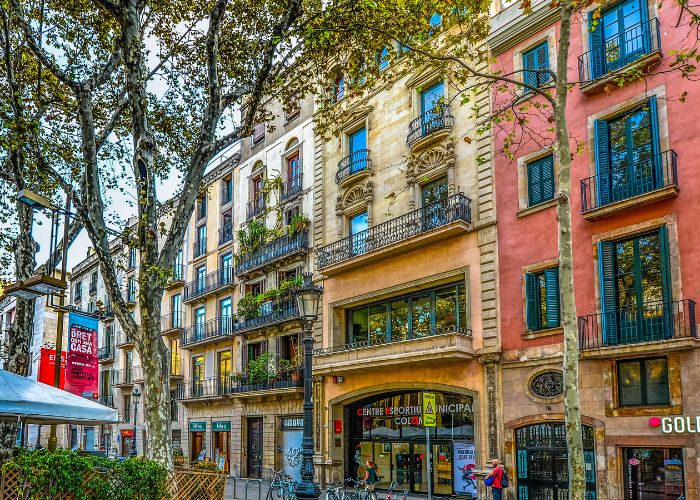MADRID – A third of heat island deaths could be avoided if trees covered 30% of urban space. This is shown by a study conducted by the Barcelona Institute for Global Health (ISGlobal).
Data from 93 European cities shows more than 4% of summer deaths are due to the heat of urban spaces. The study was published Wednesday in the journal “The Lancet” and advocates for greener cities.
ISGlobal’s work indicates that heat exposure is associated with premature death, cardiorespiratory disease and hospital admissions, especially during heat waves. But it also occurs during moderately high summer temperatures.
“Cities particularly vulnerable to high temperatures”
“Cities are particularly vulnerable to high temperatures. Less vegetation, higher population density and impermeable surfaces of buildings and streets, including asphalt, causing a temperature difference between the city and the surrounding areas. This phenomenon is called islanding or urban heat,” explains Tamara Iungman, a researcher at ISGlobal and the first author of the study in RTVE.es.
Increasing heat-related illnesses and deaths
With global warming and the growth of cities, this effect is expected to worsen in the coming decades. Iungman warns: “Predictions based on current emissions show that heat-related illness and deaths will become a major burden on our health services in the coming decades.”
Related post: Number of deaths attributed to heat in Spain tripled
The researchers estimated the mortality rates of people over 20 living in 93 European cities. This related to a total of 57 million inhabitants, between June and August 2015. More recent data were not available. In doing so, they collected data on daily rural and urban temperatures for each city.
First, they estimated premature mortality by simulating a hypothetical scenario without an urban heat island. They then calculated the reduction in temperature that would be achieved by increasing tree cover to 30%. This brought them to a figure of the number of deaths that could be avoided.
The researchers aim to inform those responsible for local governments about the benefits of integrating green zones in all neighbourhoods. In doing so, they would create more sustainable, resilient and healthier urban environments. So says research leader Mark Nieuwenhuijsen.
Trees help lower the temperature
The results show that from June to August 2015, the cities recorded an average of 1.5°C above the surrounding areas. According to the researchers, 6,700 premature deaths are caused by rising city temperatures, representing 4.3% of total deaths during the summer months and 1.8% of deaths during the year.
The work claims that a third of these deaths (2,644) could have been prevented by increasing tree cover to 30% of urban space, which would lower temperatures. In general, the cities with the highest heat death rates are in southern and eastern Europe. These are also the cities that would benefit most from more trees. The authors do acknowledge that planting more trees can be difficult in some cities due to design. The planting of trees must also be combined with other interventions such as green roofs or other alternatives to lower the temperature.
“Our results also show the need to preserve the trees we already have, as they are a valuable resource and new trees take a long time to grow. Moreover, it is not only about the number of trees, but also how they are divided,” said Nieuwenhuijsen.
Increasing green space in cities has many other health benefits
According to Iungman, the study provides valuable information for adapting cities and making them more resilient to the consequences of climate change. “Here we only analyse the effect of trees on temperature, but increasing green space in cities has many other health benefits, such as increasing life expectancy, reducing mental health problems and improving people’s cognitive function,” assures the researcher.
Detailed data for each of the 93 cities can be found in Urban Heat Island Effect in Europe – Infogram.


